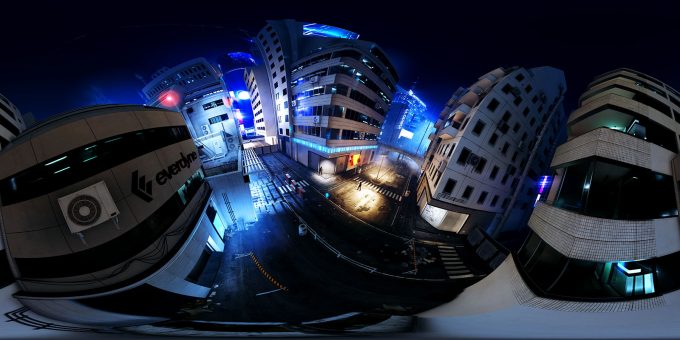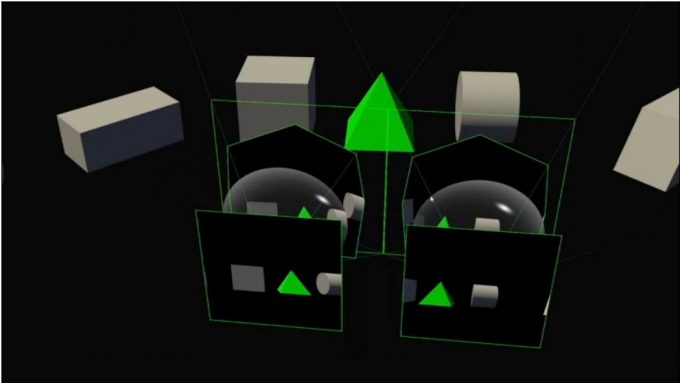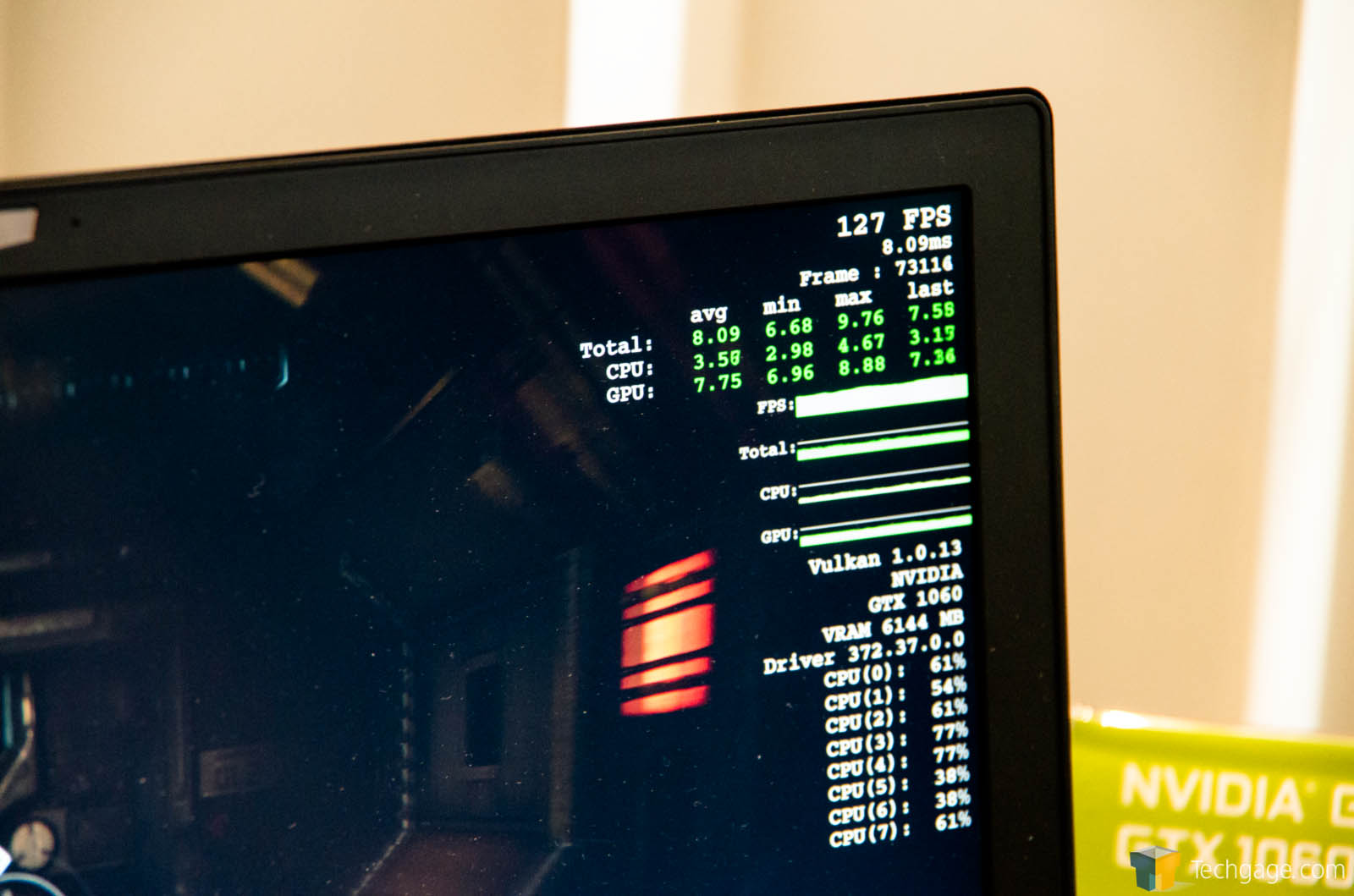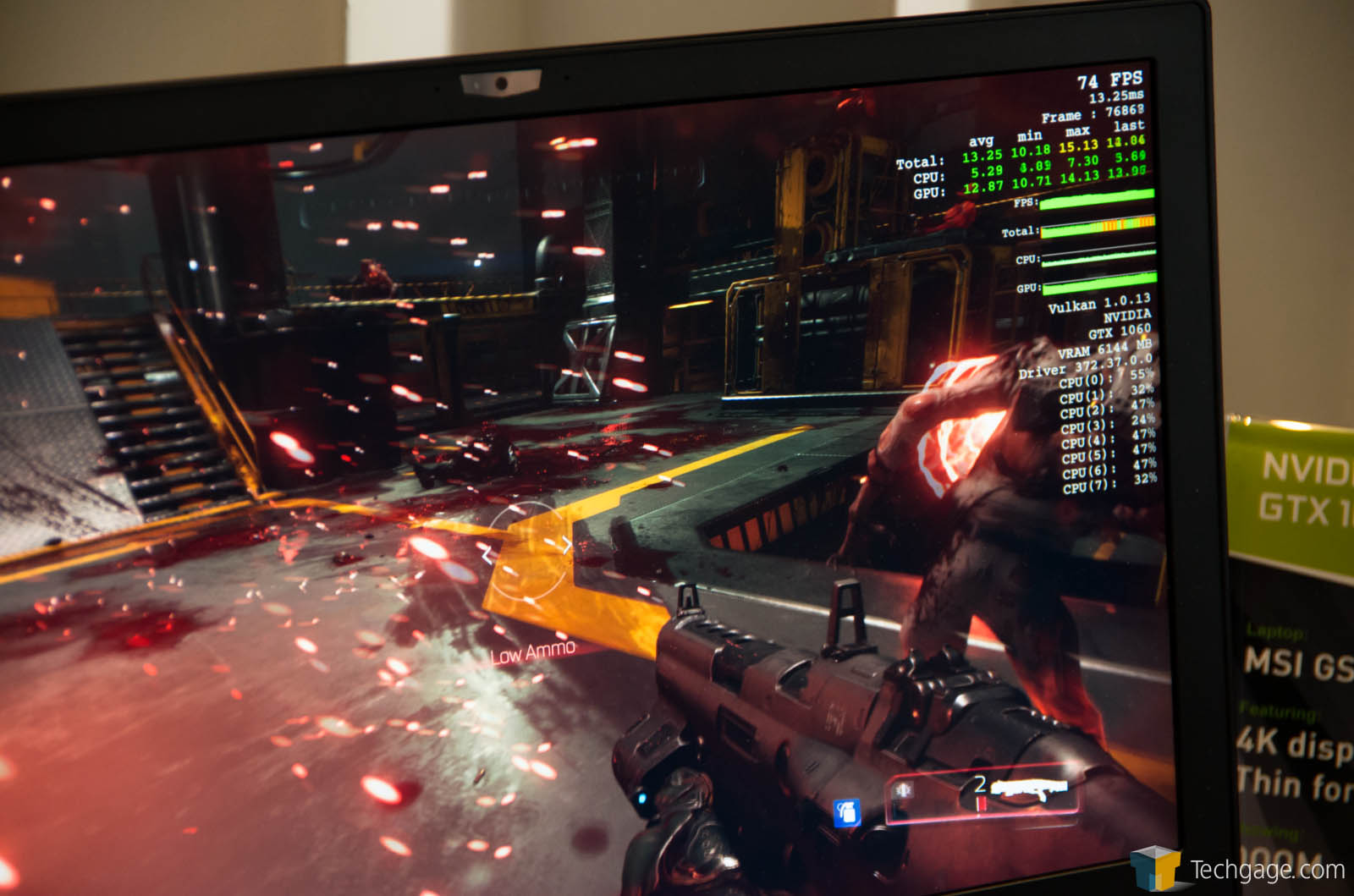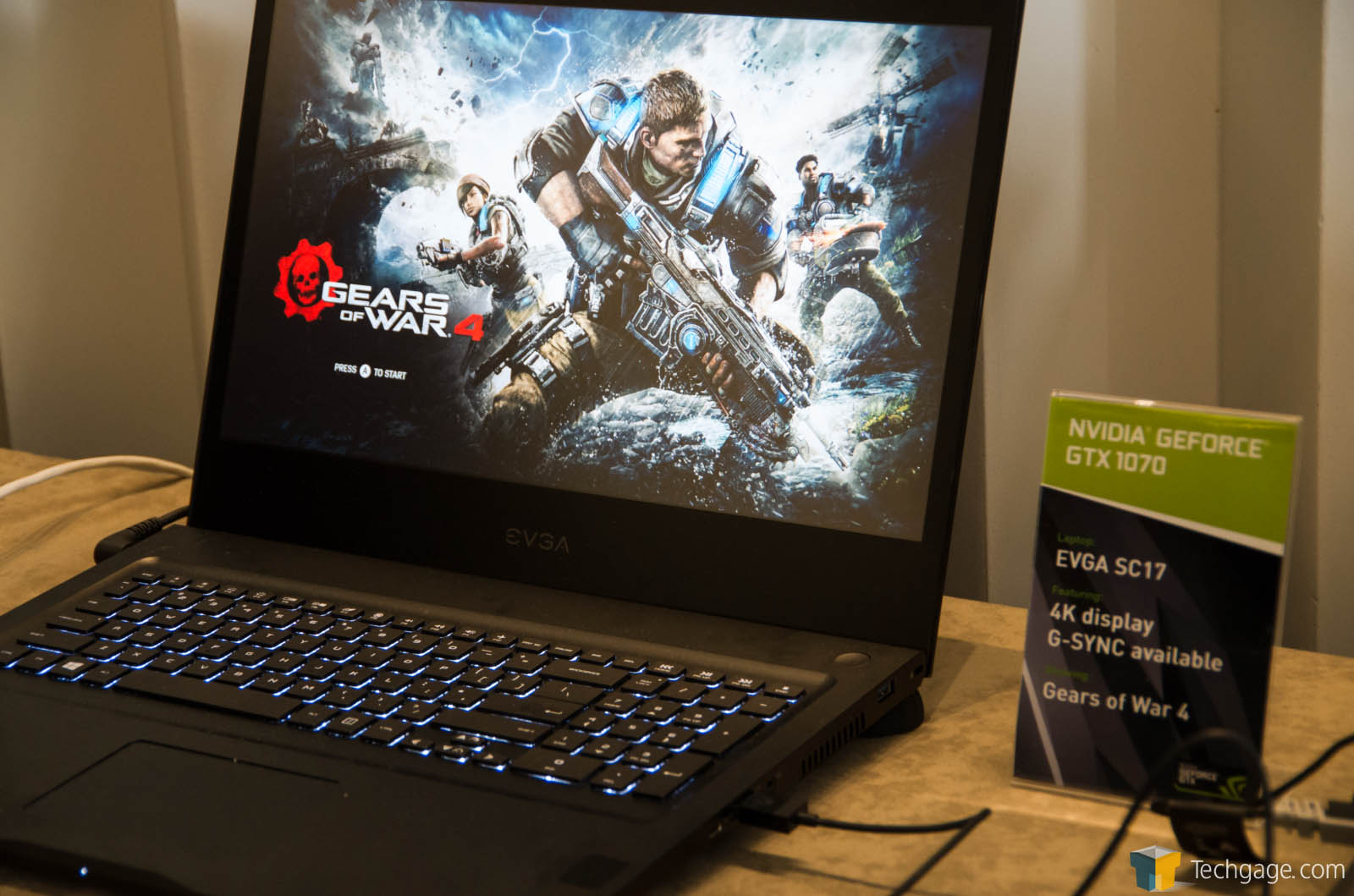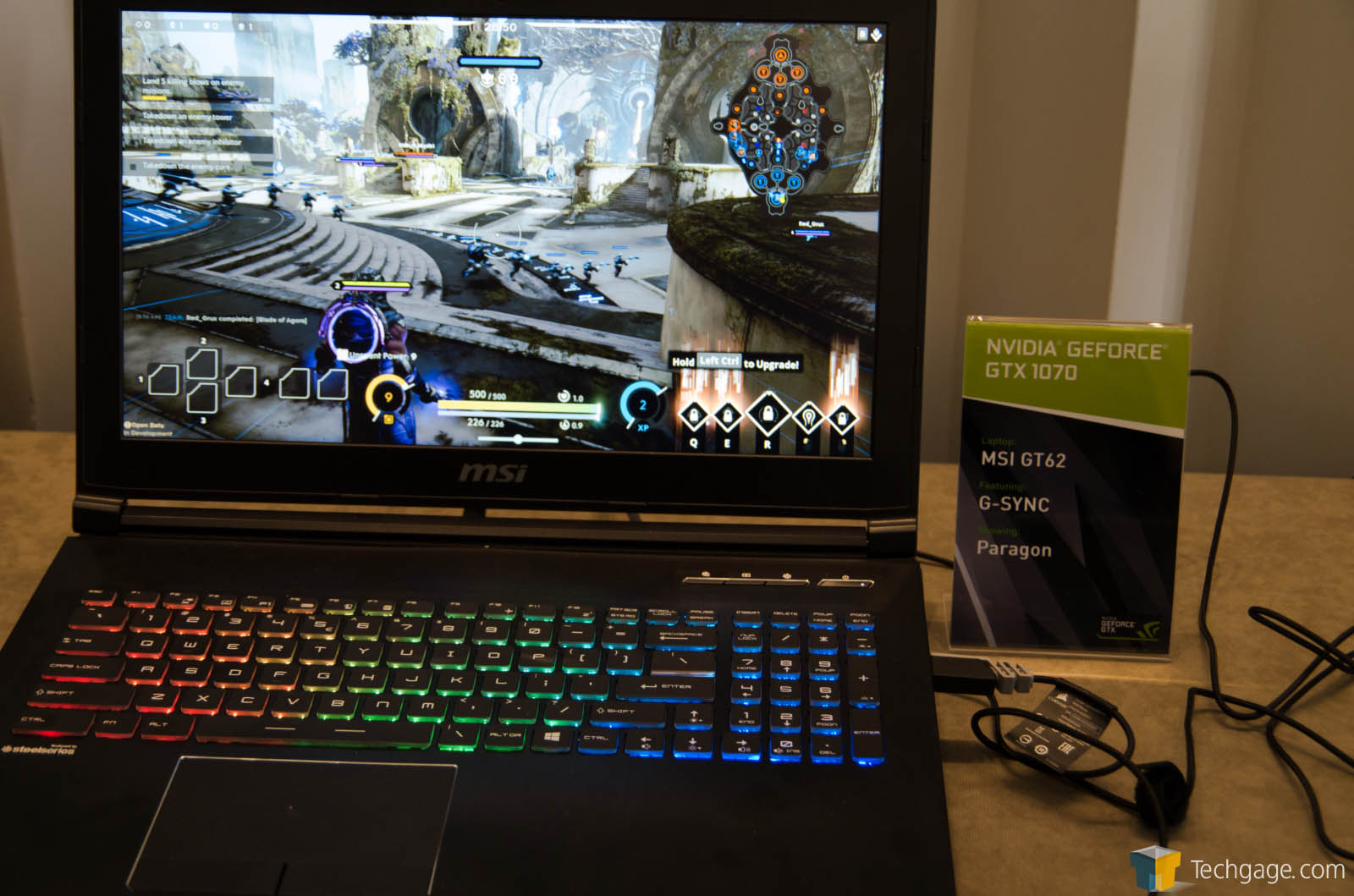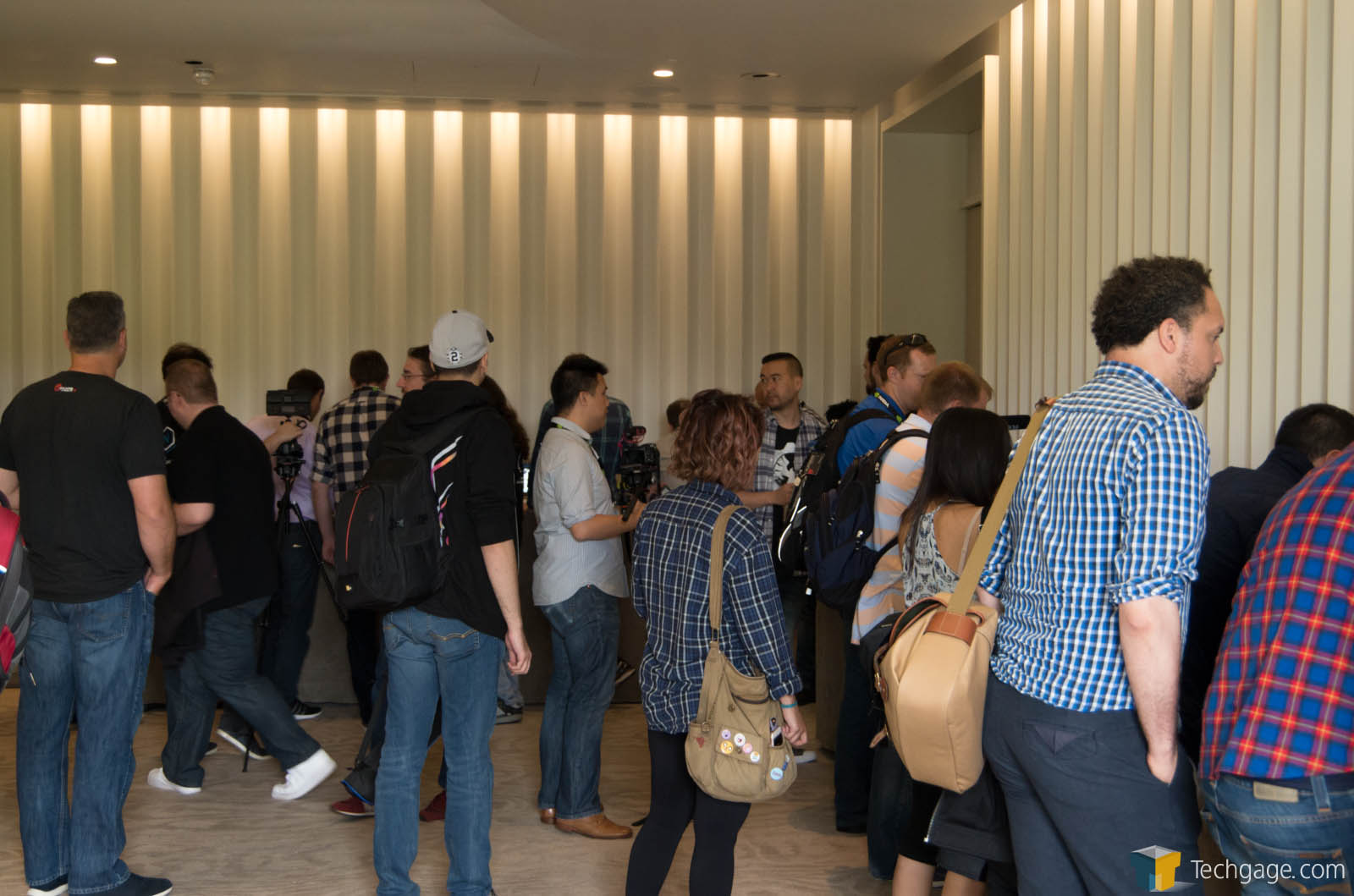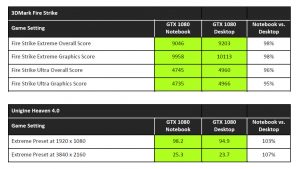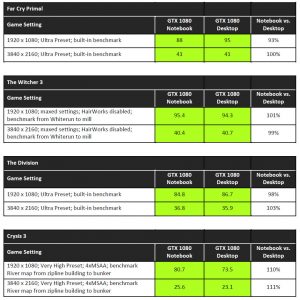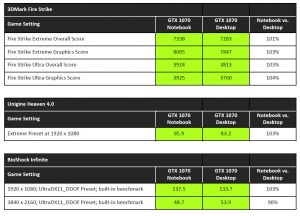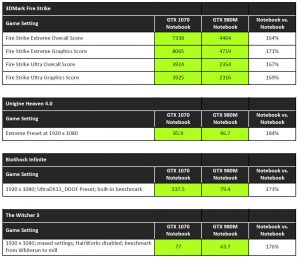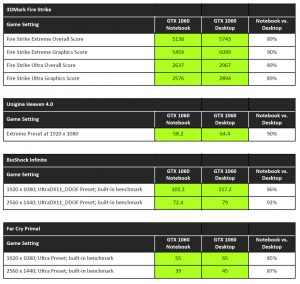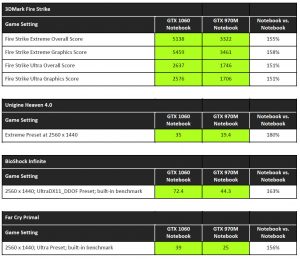- Qualcomm Launches Snapdragon 4 Gen 2 Mobile Platform
- AMD Launches Ryzen PRO 7000 Series Mobile & Desktop Platform
- Intel Launches Sleek Single-Slot Arc Pro A60 Workstation Graphics Card
- NVIDIA Announces Latest Ada Lovelace Additions: GeForce RTX 4060 Ti & RTX 4060
- Maxon Redshift With AMD Radeon GPU Rendering Support Now Available
A Quick Look At Pascal For Notebooks – NVIDIA Pushes For 120 FPS On A Laptop

NVIDIA continues with its aggressive launch of Pascal with the announcement of its new wave of notebook GPUs, the GTX 1080, 1070 and 1060. With promises of desktop level performance from a notebook part, NVIDIA is pushing hard for high performance solutions that are VR-Ready and 120 FPS capable.
Page 2 – NVIDIA Pascal NoteBooks – Features & Benchmarks
NVIDIA still likes to remind folks about the new features that we will start seeing deployed by a number of developers in games, to help leverage all this raw processing power. All of this we have talked about before, such as the rather cool Ansel screenshot engine. This is something we saw deployed to the latest Mirror’s Edge Catalyst, and something we expect to see in The Witcher III this coming October.
In a nutshell, Ansel is screenshot 2.0, adding the ability to not only reposition the camera, but adjust the FoV, exposure, contrast, filters and zoom. On top of all that, Ansel lets you take spherical screenshots for viewing with a VR headset, then going further, lets you take ludicrous level resolution screenshots that are 32x higher than the native resolution. It’s the perfect tool for not just taking screenshots, but for composing the shot too.
The main downside to Ansel is that it’s an NVIDIA GameWorks tool and it needs to be enabled on a per-game basis, so this isn’t something you can pick-up and go with any game unfortunately. However, a number of Maxwell based GPUs can also take advantage of this tool when it’s released, such as with the GeForce GTX 980 Ti.
The other big thing that NVIDIA is deploying as part of VRWorks, is Simultaneous Multi Projection (SMP). To simplify, this is a mixture of single-pass rendering of each viewport in a VR headset, as well as rendering a pre-distorted frame to minimize processing overhead when rendering VR or multiple monitors. Obviously it’s not simple, but the net result is a 30% performance improvement in rendering for VR headsets and multi-monitor setups.
There are a couple other in-development tools coming that don’t get a lot of attention (mainly because there are few examples), such as VR PhysX and PhysX Audio. VR PhysX did get a demo of sorts with NVIDIA’s first and only game to date, the VR Funhouse that’s available on Steam for free. Collision detection might seem old-hat now, but things got complicated when two different viewports needed to be considered at the same time. Then on top of that, there is the issue of feedback, since the user is effectively blind to the environment in 3D space. Providing haptic feedback in the form of rumble in the controllers helps give users a small amount of interaction with the environment, letting people feel when their hand reaches out to touch something.
NVIDIA’s Reference Results
Due to the complexity of obtaining pre-built notebooks with the right combination of hardware, we can only go by the performance metrics of what NVIDIA has provided us from its internal testing. This pre-release hardware was from a number of manufacturers – including the likes of ASUS, ACER, MSI, Dell, HP and Razer.
At the event, there were some test units available to mess around with to confirm results, however, we hadn’t set these systems up ourselves, so again, those tests are simply confirmation of the reference metrics that NVIDIA provided.
At some point, we will be getting in a couple of notebooks to review to confirm these results for ourselves. We already have one en route that will be here in the next couple days. As such, we can only show off some of the best-case scenario improvements you can expect from the new Pascal Notebook GPUs, compared to the desktop GPUs and the previous Maxwell-based GPUs. These scores were provided by NVIDIA from its press materials pack. While the lists is exhaustive and detailed, we can’t include all the results, but we can provide a summary.
Pascal GTX Notebook Vs Desktop Vs Maxwell
For the most part, the notebook version of the 1080 is near-identical to the desktop counterpart. Under a number of synthetics, the chip is a couple percent slower, which is to be expected from a slightly lower base clock. At the same time, there are a number of tests, namely 4K results, where the notebook GPU performs better, by as much as 10% in some cases.
When we pressed NVIDIA for an explanation, there was some shrugging and pauses. For the most part, variance is expected, since the desktop and notebook are very different systems, with different thermals and internal components. There is a chance that the more compact nature of the notebook is decreasing latency between major components, driving up speeds. Perhaps there are interrupts from the extra I/O controllers causing issues. There could be any number of factors involved, so it’s not strictly a completely fair comparison. However, the results still stand. The notebook version of the GTX 1080 is at least as fast, if not faster than the desktop GPU.
When compared with the notebook version of the GTX 980 (the non-M version, like this latest generation), then results are similar to what we saw with the original 1080 launch, compared to the desktop 980, generally a 50-70% increase in performance, depending on the task at hand, with 4K benchmarks showing significant gains due to the extra memory bandwidth (letting the GPU process those huge texture assets much faster).
With the GTX 1070, similar results are seen. Despite having the extra cores, the slower clock does impede its gains to some extent, as it rarely goes beyond what the desktop GPU is capable of. Perhaps thermal limits are preventing the chip from utilizing the boost clock to its full extent. From a buyer’s perspective, this 1070 is likely the best option for overclocking, since those extra cores will likely help when the clock speed can be pushed up, but that will all depend on the manufacturers cooling solution.
When compared with its TDP replacement, the 980M, then we see much stronger gains, typically 70%+ with the 1070 Notebook GPU. What gets confusing though, is that all test comparisons were done at 1080p (except synthetics). This is worth mentioning, as it relates to the 1060 tests we check later.
The GTX 1060 is the odd one out, as its notebook implementation is consistently slower than the desktop part, typically by 10-15% across the board on all tests. It comes close with a number of 2560×1440 tests, but under 1080p, it’s slower. That’s not to say it’s a bad design, you can still hit 60FPS quite easily with a number of titles, you just don’t get the same power of the desktop part – which is traditionally expected.
Compared to the replacement chip, the 970M, it’s the same as before with 50-70% gains over Maxwell with an equivalent TDP. What’s disappointing is the lack of 1080p tests comparing the 1060 with the 970M, as all provided metrics are for 2560×1440 only. If the other GPUs are anything to go by, it’s probably because the 1060 performs better at the higher resolutions than at 1080p, were the percent increase is likely to be lower. But when you look above with the 1070 results which used 1080p only… then there is some selective bias going on with NVIDIA cherry-picking results.
That’s not to say that all the results are now invalid, but it does make it worth noting that real-world performance is going to be slightly different, and a direct comparison of hardware is not going to be entirely possible. What you can take away from all this is that the new notebook Pascal GPUs are just as fast as the desktop GPUs in most cases. Compared to Maxwell, similar gains are going to be seen as we saw with our desktop GPU reviews of the GTX 1080, 1070 and 1060.
To wrap up, you can expect to see a new wave of NVIDIA powered gaming notebooks from all the major OEM providers, and the chips are everything we expected from them. Pascal was a great launch for NVIDIA, and it continues to impress even now. Once we get out own notebook in to review, we will give it the once over and see how it stacks up against our top-end GPU testing rig.
Support our efforts! With ad revenue at an all-time low for written websites, we're relying more than ever on reader support to help us continue putting so much effort into this type of content. You can support us by becoming a Patron, or by using our Amazon shopping affiliate links listed through our articles. Thanks for your support!




